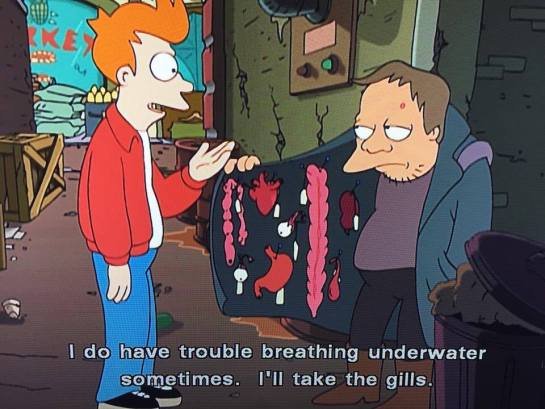All About Breathing
Contents
Part 1: All About Breathing
Air contains about 78% nitrogen, 0.93% argon and 0.04% carbon dioxide, none of which is useful to us.
It also contains 20.95% oxygen – the important part – of which we burn about a quarter of (5%-6% of the 21%) with each breath fueling chemical reactions in our bodies. Our muscles and brain, in particular, consume a lot of oxygen to function.
Check your resting breathing rate
If possible, follow this procedure that tech and solo divers do to better understand themselves.
Grab a tank, a regulator, and your favourite tv show. Open the tank, sit down, watch an episode and check the pressure every 10 minutes. Ideally you should get a nice averaged resting breath rate after 30 minutes.
This gives you an idea of what you’re like when you’re not diving, to better understand if the issue relates to diving at all, or is just based on your own size and metabolism.
Size

Being simply larger means larger muscles. More oxygen is required to work them, even when resting. Body builders tend to use a lot more air than marathon runners, for example.
Height has a direct relationship to lung size. For men, lung size usually ranges between 3L and 5L. Height is not the only factor, it’s related specifically to trunk (chest/torso) height and radius. Women are smaller around, for the same height, than men, reducing their lung volume.
Bigger lungs mean a greater volume of air moved with each breath.
Unfortunately, not much can be done about this. While lung volume reduction surgery is a real thing, it’s usually only used in cases of severe emphysema.
…please don’t get LVRT in a dodgy Thai hospital.

Core temperature
Your body burns energy to stay warm. The more insulation you have (fat or neoprene, discussed later), the less heat you lose to conduction, and the less hard your body has to work to stay warm.
Sex
Women tend to use less air than men, due to smaller frames, and thus smaller lungs. However, women also tend to feel the cold more easily than men, and tend to require more weight than men (which potentially means working harder).
Physics
If you find that you’re diving deeper “just because you can”, reconsider your dive profile. Go deep because there is something to see there, not just because you recently certified as a Deep Specialty Diver.
Each 10m of depth is another atmosphere of pressure, and another multiple of air consumption. That is, at 20m (3ATA), you’re using 50% more air per breath than at 10m (2ATA).
Fitness
The fitter you are, the lower your resting heart rate, and the quicker your heart rate comes back down after exertion. Emphasise cardio exercise in your daily life, not muscle bulk. Muscles require a lot of blood, and thus more breathing to power.
Carrying less fat (while insulating), will help streamline you (see below), and make it easier to move through the water. The more of you there is, the more work you will need to do to move around. Admittedly, if you are drift diving, or moving especially slowly, then being slender has a less dramatic effect on your air consumption.
Health
Don’t smoke, especially an hour or two before diving. Most people notice a marked improvement in air consumption within 3 months of quitting regular smoking.

I’m surprised that it does not mention to calibrate your 1st stage to the style of diving you do. Most can have shims added inside to adjust the intermediate pressure before it reaches the 2nd stage. Then for further twicking adjust the cracking point of the second stage. Donc forget to use proper tools to do so and this will void the warranty of it unless you have it done by a certified person to do so.